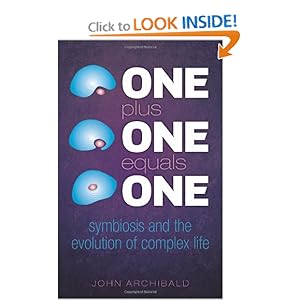 From a review in Nature of One Plus One Equals One: Symbiosis and the Evolution of Complex Life :
From a review in Nature of One Plus One Equals One: Symbiosis and the Evolution of Complex Life :
From 1905, when Constantin Mereschkowsky first postulated that higher plants depend on “little green slaves” (chloroplasts), until the 1980s, the endosymbiotic theory provoked controversy. The evolutionary biologist Lynn Margulis was a proponent from the late 1960s onwards, along with botanist Peter Raven and microbiologist Jostein Gøksoyr; botanist Arthur Cronquist was among the detractors. Proof came with the molecular era. As Archibald describes, a constellation of biologists, biochemists and bioinformaticians – prominently Michael Gray, Doolittle and Margaret Dayhoff – exploited molecular technologies as they became available.
The consequences of symbiosis are ubiquitous and ongoing. Symbiotic cells have themselves been engulfed as symbionts of hosts, from algae to insects. Archibald gives many examples, including the citrus mealybug Planococcus citri, which contains one bacterial symbiont nested within another. And sequencing data are revealing many ghosts of symbioses past, in the form of genes transferred between interacting genomes. Many nuclear genes in plants were transferred from the chloroplast ancestor, for example.
Mysteries remain. A central one is the origin of eukaryotic cells. …
Sharing of information creates synergy that leads to more information, but a good deal of information must already exist.
If a creature could exist that had very little information, it probably wouldn’t be of much use in a symbiosis, any more than a person with few skills and little drive or interest is of much use in a business. And organisms that can actually accomplish the symbiosis by absorbing others successfully must also first exist.
Follow UD News at Twitter!